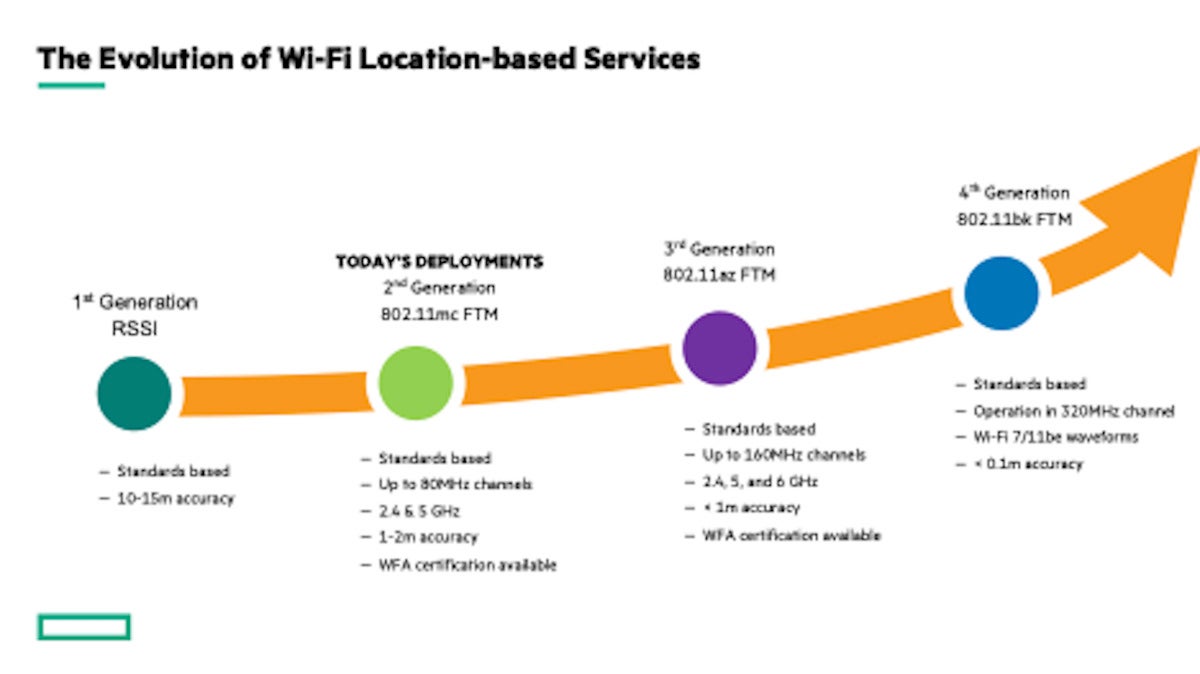
By: Dorothy Stanley, Fellow and Head, Wireless Standards Strategy, Aruba, a Hewlett Packard Enterprise company.
Wi-Fi systems are so ubiquitous indoors that location-based services are a natural extension. Retail analytics, indoor navigation, and high-value asset tracking (such as medical devices in health care) are a just a few of the use cases that organizations are deploying using Wi-Fi location-based services to improve business outcomes. In this post, I’ll delve into the evolution of Wi-Fi location-based services and give you a preview of where the standards are taking us and how your organization can take advantage of them.
The backstory on Wi-Fi location-based services
Historically, Wi-Fi location-based services estimated location based on the receive signal strength indicator (RSSI) from the access point or router to the client device. RSSI delivered 10-15 meters accuracy indoors, which was a great start but limited its usability since signal strength can degrade due to environmental conditions. For example, an RSSI-based safety application for hotel employees cannot pinpoint room-level accuracy; a wayfinding application has difficulty guiding visitors through a large public venue.
 Aruba
ArubaToday’s deployments: 802.11mc aka FTM
Fortunately, new techniques have increased location accuracy indoors and unlocked new opportunities. The second generation of Wi-Fi location-based services, 802.11mc also known as fine timing measurement (FTM), is based on round trip time and is far more accurate – up to 1-2 meters. In fact, the vast majority of positioning and location use cases can be supported using FTM without the need to deploy overlay technologies.
Building upon the 802.11mc standard, Aruba has invested in auto-locating APs that communicate with client devices and refine their position using FTM to help our customers realize the value of Wi-Fi location-based services at scale. In addition, our AP hardware has been certified by the Wi-Fi Alliance under the Wi-Fi Location® program to ensure adherence to standards and interoperability. In addition to Aruba, 802.11mc standards have been embraced by device vendors such as Google and Zebra creating an FTM-enabled ecosystem.
Fine-grained Wi-Fi location-based services on the horizon
The third-generation standard for Wi-Fi location known as 802.11az was ratified in December 2022 and can be interoperability certified in the Wi-Fi Alliance Wi-Fi Location program; however, devices are just starting to appear in the market. 802.11az mechanisms offer sub-1 meter accuracy, which will allow for innovative new use cases such as micro-targeting for retail and warehouse asset tracking. It provides gains in spectral efficiency to efficiently support larger numbers of devices by consolidating frame transmissions using mechanisms defined in the 802.11ax-2021 standard. It will also support Wi-Fi location-based services in 6 GHz spectrum, which is essential given the rapid adoption of Wi-Fi 6E. Work has already begun on the fourth-generation standard, 802.11bk to drive even higher levels of accuracy. On belay!
Explore further:









